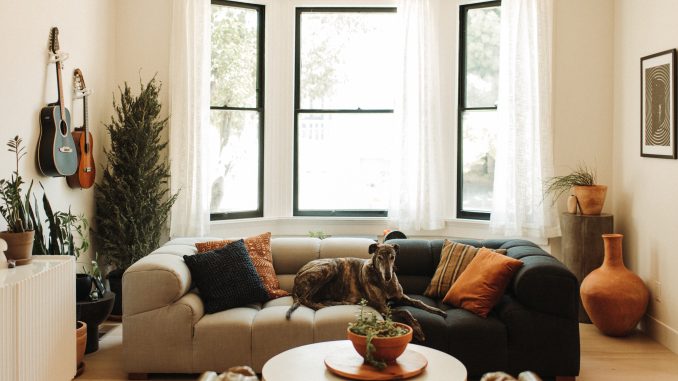
While health, economics, politics and jobs are being affected by the pandemic, some say that COVID-19 played a significant role in helping us connect more with our families. And, as family time is on the rise, so is the time spent in living rooms.
If redesigning your living room is on your list, arranging your furniture is the key to obtaining a flawlessly comfortable space and relaxing atmosphere.
Declutter the Room

Remove all of your furniture with the help of a furniture dolly or assistance. This will offer you a better concept of the form of the room without influencing your judgment due to the present layout.
If you have not enough storage space, take what you can and keep the remainder in hidden areas while you prepare.
Choose the Right Combination of Big and Small Elements

Follow this rule unless your living room is very tiny, huge, or oddly shaped. A few large pieces of furniture should account for the majority of the furniture in terms of volume. End tables, ottomans, and other such small things should complement these by providing footrests and drink stands, rather than obstructing circulation through the space or turning a pleasant arrangement into a cluttered mess.
A couch, armchair, and bookshelf, for example, might define the useable area and establish the color palette. A tiny coffee table and two end tables then provide important duties while also providing smaller things for extra aesthetic appeal without detracting from the bigger pieces.
Advice on organizing your living room properly by avoiding common mistakes can be found here. It is also applied if your living room has an unusual design, such as angled walls that make the area feel excessively cramped or too stretched out.
Choose a Focal Point

Every space benefits from a focal point, which may be any object or place that draws the eye and provides something to orient your other furnishings around. Without a focal point, the whole design might appear haphazard and unplanned, and there may be awkward places that make people uncomfortable.
The most typical focus points are those that are against one wall, such as a television, fireplace, or a huge set of windows. Place chairs along the other three sides of the space, at right angles or slightly slanted toward the main point.
Create a symmetrical furniture arrangement with sitting on four sides if you don’t have a focal point or if you want to promote more discussion. However, it is more difficult to achieve an appealing design in this manner; consider adorning a bookshelf or other tall piece of furniture instead to establish visual harmony without disturbing guests.
Allow Enough Space Between the Walls and the Furnishings

When all of your sofas are pressed up against a wall, the space might appear chilly and unwelcoming. To make a more intimate space, pull the furniture in on at least two or three sides. Follow the distance recommendations below, but feel free to modify them if you like smaller or greater areas.
Usually, experts say to allow at least 3 ft. large spaces. If you have active children or family members that demand more room, raise this to 4 ft (1.2m). If you don’t have enough room to create pathways on three or four sides of the room, bring the furniture inside just enough to set a light behind it, either alone or on a small table. The light provides the illusion of more room.
Place Your Furnishings in a Handy Location

Some of this is down to personal choice, and you can always alter to reflect the routines of your home. Nonetheless, these basic design “rules” are a useful place to start:
- Coffee tables are normally 14–18 inches (35–45 cm) apart from the chairs. If your family members have short arms, shorten this distance; if they have lengthy legs, lengthen this distance.
- Side chairs are often placed far away from the sofa as a default.
- Television placement varies widely depending on the size of the space, the viewers’ eyesight, and personal choice.

Leave a Reply